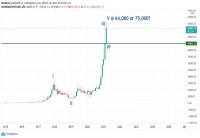|
Standardization seems to be the recent keyword in Islamic finance - exemplified by the ISDA IIFM ta'hawwut hedging master agreement, the recent release by BNM of the Murabaha Contract Parameters (and upcoming release of similar standards for Ijara, Istisnaa, etc), and the Bursa Malaysia CFM trading platform (not so much the release of a standard as the correct implementation of one), we see that the move has been one of consolidation and/or unification. The search for contact clarity and trading volume is very much alive, but other vanilla structures have not found as much reception as one might imagine, this is very much exemplified by Shariah compliant Real Estate Investment Trusts (or rather the lack of them). A great starting point has to be the existing guidelines on Islamic REITs as provided by the Malaysian Securities Commission (see reference link), which where issued back in 2005 and only had to wait a few months until the first such vehicle was eventually launched. Thus it was in June 2006 that the Al-'Aqar KPJ REIT was listed (see reference link) followed a half-year later by the Al-Hadharah Boustead REIT in February 2007 (see reference link). It was clear from these two offerings that the initial forays into Islamic REITs seemed to be seeking very specific underlying assets. In the case of Al-'Aqar it focused on hospital and healhtcare facilities, whereas Al-Hadharah was much more concentrated as it involved palm oil plantations. It wasn't until December 2008 that a more diversified offering came to the market in the shape of AXIS REIT (see reference link) which incorporated both office and industrial assets, and quite interestingly it was also converted from an existing conventional structure. Defining a REIT is straight forward - a collective investment scheme that pools funds to allocate across a portfolio of real estate assets. The investments can take the form of buying, managing, administrating, leasing and eventually selling these various assets. As a listed vehicle a REIT provides investors with various benefits: asset accessibility, liquidity, diversification, and exposure to real estate that would otherwise be prohibitive for individual consumer or small retail investors. Much academic and industry literature has been devoted to the risks and the advantages of REITs - from low correlation to equity markets, active management, to even serving as a hedge against inflation. Furthermore, the generic structure remains similar for a conventional REIT as it does for a Shariah compliant REIT, although there are very clear specifics that differentiate the two. Most noticeably of all the underlying properties (and related businesses operating out of these properties) must not be categorized as being involved in non-permissible activities (such as a gambling enterprise or a tobacco factory). If a business indeed contains non-permissible income this must remain below a stipulated level (the SC guidelines outline a level of 20% of total turnover). Crucially, the financing, investments and deposits of an Islamic REIT are required to be maintained in accordance to Shariah principles. Similarly, insurance must be sought under a Takaful structure (unless such coverage is not available or prohibitively more expensive in the market where the REIT operates). Similar guidance is given to the use of risk management tools such as forward sales. Hence an Islamic REIT provides us with a clear framework to work with, very beautiful in its simplicity. From a product manufacturing point of view the additional issues to be addressed would include:
Notwithstanding these clear stipulations, it has been four years since the issuance of the SC guidelines and it seems that the overall market (whether inside or outside of Malaysia) has failed to build on this. The momentum generated seems to have been short-lived, to the dismay of many. Some arguments have been made as to the slow takeup of Islamic REITs: high distribution rates (and hence lower reinvestment) allowing for slow growth rates; non-permissible restrictions limiting the investment universe; the cyclical nature of real estate markets; and the ability (or inability) to source quality underlying assets. Here are some other considerations: Leverage: Surprisingly, one the various benefits attributed to conventional REITs is that of low leverage, according to NAREIT the average debt ratio for REITs in North America remaining below 55% over the past decade. The latest figures from NAREIT actually put the debt ratio for Equity REITs at 52.8% and 60.7% for All REITs. While the SSB will need to determine the appropriate level and type of financing that is allowed, it is evident that the development of a REIT solution doesn't have to be limited by the degree of financing (whether the pricing of such financing is on par with that available in conventional markets is less clear cut). Volatility & Liquidity: The latest dive in global property markets has certainly had an impact on the financial performance of REITs, but what has been less obvious is the strain this has placed on management of capital reserves and the sourcing of funding for short term requirements. In fact regulatory authorities have sought to alleviate some of the impact from the global financial crisis, whether it is by relaxing the limit on aggregate borrowings (such as in Kong Kong) or by allowing dividends to be paid out in stock as opposed to cash distributions (such as in the US). Nevertheless, most jurisdictions have been able to provide sufficient and prompt support to the REIT marketplace (with perhaps the UK as an exception). Sector Concentration: While it is evident that a hospitals and plantations provide very focused investments (as in the case of the two Islamic REITs discused earlier), this does not mean that conventional REITs have to be fully diversified either. In fact if one looks at the global REIT marketplace, one can find several industry or sector-specific REITs (including healthcare, industrial and even self-storage). In the UK for instance, one can find a healthcare REIT (Primary Health Properties) with a market capitalization of GBP 173 million. This certainly remains small compared to British Land (the largest UK REIT) which commands a market capitlization of more than GBP 4 billion (investing across a diversified commercial property portfolio), but it proves that thematic REITs are viable. Similarly, both the UK and US have self-storage REITs (Big Yellow and U-Store-It Trust respectively). The US market alone is home to 11 healthcare REITs (out of a total of 138 which comprise the FTSE NAREIT All REITs Index). Market Access: While some real estate markets have been favored by Islamic finance (namely UK and US markets), this type of exposure has often been achieved through private real estate funds (often close-ended) and not through any type of liquid offering. With Asian real estate having exhibited stellar returns over the past five years (posting rolling 5 year returns of 23%) the argument for accessing this and other markets (frontier, BRIC, etc) is ever increasing. With markets such as China planning to launch REIT structures this year it is clear that gaining access to specific geographies is not necessarily exclusive to private/institutional vehicles. Here we have opted to avoid a detailed discussion of the REIT structure per-se, as it seems that it is not the structuring that is a limiting factor. Instead it seems that the deficiency lies in a lack of local market knowledge, both for identifying quality assets as well as for navigating local regulatory regimes (minus Malaysia, which has proven once again as a friendly venue). While this might be construed as a critique we rather see it as a call for revitalizing this under-utilized structure. It is evident that as much government and/or regulatory support is given, it is up to the private sector to identify and capitalize on market opportunities. Once again we see a wide range of products/markets that are not being offered in a Shariah compliant manner, but this is certainly not because of costs, complexity, product immaturity or any other 'classic' excuse. Whether the journey of Islamic REITs is destined to be counted in the single digits remains to be seen. |
Opalesque Islamic Finance Intelligence
Featured Structure: Islamic REITs - An Unfinished Journey by Bernardo Vizcaino, CAIA and Nikan Firoozye, Ph.D. |
|





 RSS
RSS









